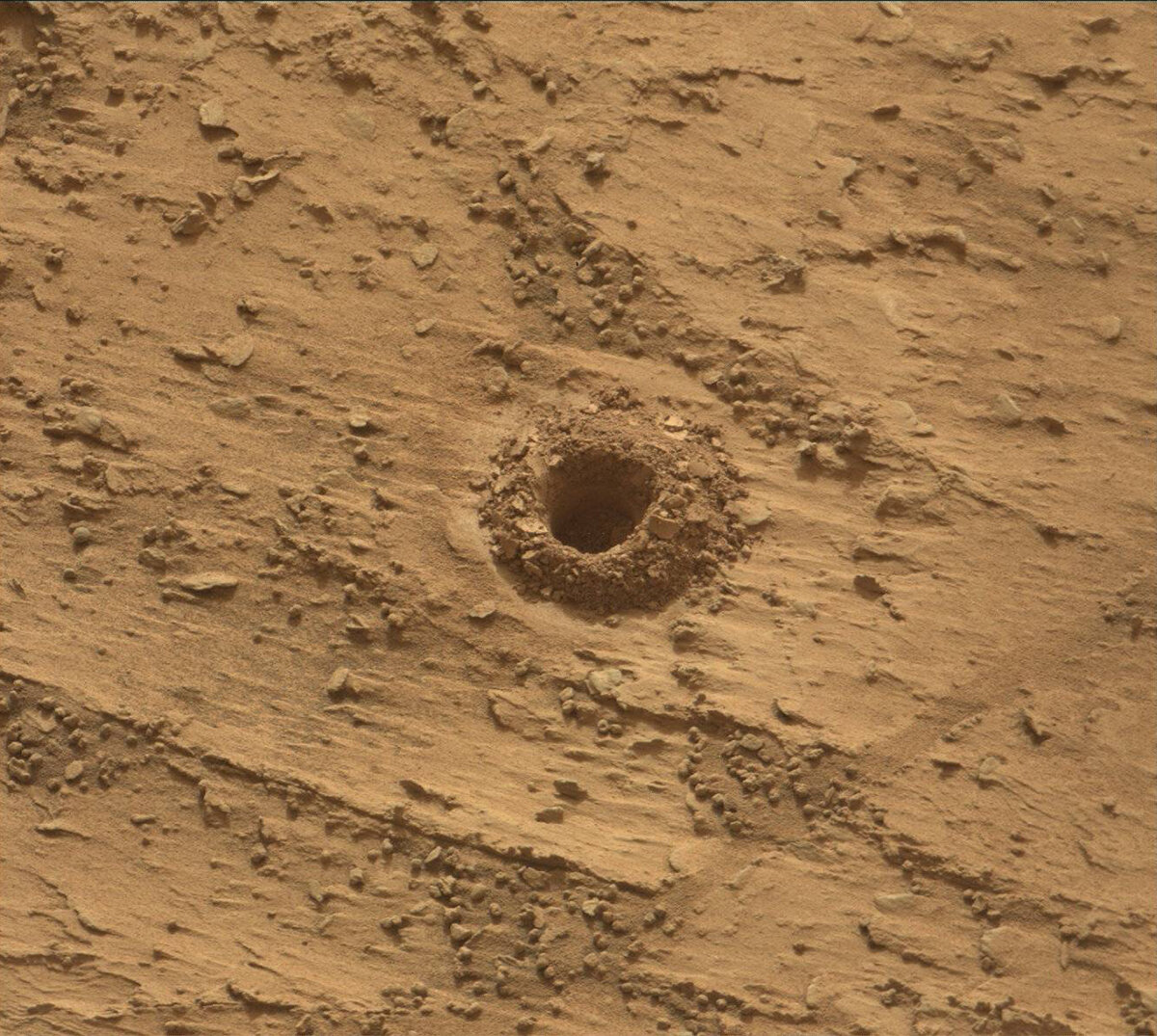2 min read

After a successful drilling of Avanavero, the team is ready to dig even deeper into our investigation of this new drill target. Tosol’s plan includes an important part of this process: our initial analysis of the drilled sample with the CheMin instrument. In addition, the team planned three full hours of remote science activities at this new drill site, including a ChemCam LIBS observation on the wall of the Avanavero drill hole. A second ChemCam LIBS on target “Pipillipai” will be used to assess chemical variability in local bedrock.
Two extensive Mastcam stereo mosaics will be used to characterize interesting textures in the “Manga Brava” target and to extend coverage of rocks adjacent to the prominent “Bolivar Butte.” A portion of the distant “Pediment Edge” will be imaged with both a Mastcam mosaic and a ChemCam RMI observation. Lastly, tosol’s plan will include a large set of observations for monitoring local dust activity, including two Navcam dust devil surveys, a Navcam dust devil movie, a Navcam line of sight image, and a Mastcam “tau” image. A Navcam suprahorizon movie and Navcam zenith movie will be used to track cloud movement.
Tosol’s plan will be the first of many focused on analyzing the Avanavero drill target. Over the coming sols, the rover’s diverse suite of onboard instruments will be used to collect a large amount of information on the drill hole and surrounding rocks. The team is looking forward to digging into these data in order to characterize our newest drill target on Mars!
Written by Mariah Baker, Planetary Geologist at Center for Earth & Planetary Studies, Smithsonian National Air & Space Museum







